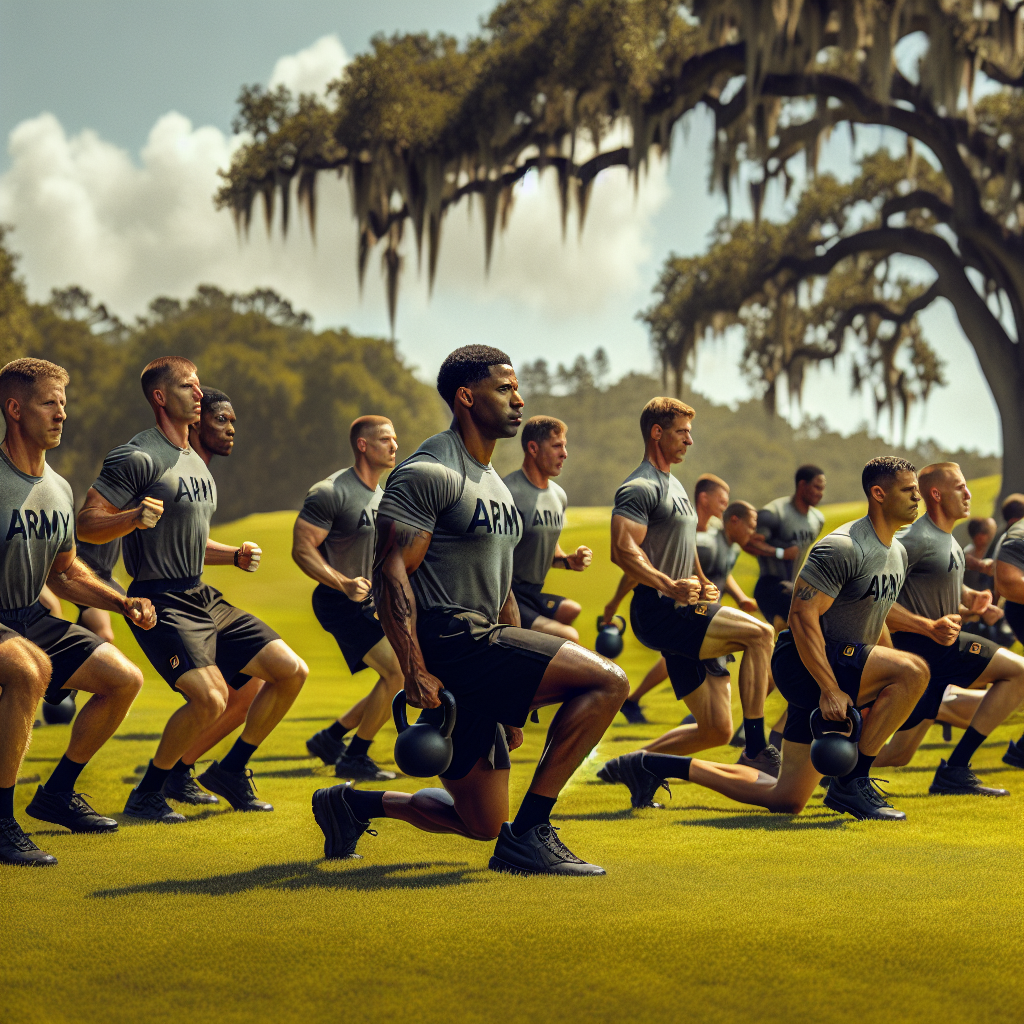
New Army Fitness Standards Enhance Readiness and Combat Effectiveness
The U.S. Army has unveiled a significant overhaul of its physical fitness standards. The new Army Combat Fitness Test (ACFT) replaces the older Army Physical Fitness Test after years of development and testing. This change marks a major shift in how the military evaluates soldier readiness. Most importantly, the new standards apply equally to men and women across all age groups.
A New Era in Military Fitness Testing
Gone are the days of the three-event Army Physical Fitness Test that featured push-ups, sit-ups, and a two-mile run. The outdated test served the Army for over four decades. However, military leaders recognized its limitations in measuring actual combat readiness. Therefore, the Army designed the new six-event ACFT to better assess the physical abilities needed on modern battlefields.
Army Secretary Christine Wormuth explained the reasoning behind the change. “The ACFT is designed to build a more lethal and deployable force,” she stated. “It directly connects to the physical demands soldiers face in combat situations.”
The new test includes events like deadlifts, standing power throws, and hand-release push-ups. These exercises better mimic real-world military tasks. Additionally, soldiers must complete a plank position hold, sprint-drag-carry sequences, and a two-mile run. Each event measures different physical qualities essential for combat effectiveness.
Gender-Neutral Standards and Performance Expectations
Perhaps the most notable aspect of the ACFT is its gender-neutral approach. Unlike the previous test with separate standards for men and women, the new test holds all soldiers to the same baseline requirements. This change reflects the modern battlefield reality where combat situations don’t distinguish between genders.
Military fitness expert Dr. James Wilson supports this approach. “Combat doesn’t care about your gender,” he notes. “The same physical demands exist regardless of who you are. The Army’s new standards acknowledge this reality.”
Early data shows that pass rates between men and women have been closer than expected. While some initial concerns existed about female soldiers meeting the standards, the Army reports promising results. Many female soldiers are not only meeting but exceeding the minimum requirements.
Age-Adjusted Scoring
While baseline standards remain consistent, the Army has implemented a nuanced scoring system. This system accounts for age differences while maintaining minimum requirements. Soldiers in different age groups can earn additional points based on performance tiers within their demographic.
The tiered approach ensures that all soldiers meet the same combat readiness baseline. Yet it also recognizes physiological differences that occur with aging. This balanced approach maintains high standards while acknowledging biological realities.
Scientific Approach to Combat Readiness
The development of the ACFT wasn’t arbitrary. The Army based the new test on extensive research and real-world combat data. Scientists and military fitness experts collaborated to identify the most important physical attributes for modern warfare.
Colonel John Smith, who helped develop the test, emphasized its scientific foundation. “We analyzed actual battlefield requirements,” he explained. “Then we designed exercises that directly measure those abilities.”
The six events specifically target different aspects of combat fitness:
- Deadlift: Tests lower body strength needed for carrying equipment and wounded comrades
- Standing power throw: Measures explosive power required for tasks like scaling walls
- Hand-release push-ups: Evaluates upper body endurance for sustained operations
- Plank: Assesses core stability essential for injury prevention
- Sprint-drag-carry: Simulates battlefield movement patterns
- Two-mile run: Tests cardiovascular endurance and recovery
Together, these events create a comprehensive picture of a soldier’s physical capabilities. Furthermore, they directly connect to the demands of modern warfare.
Injury Prevention Benefits
Beyond combat effectiveness, the ACFT offers another critical advantage: injury prevention. The old fitness test often failed to identify weaknesses that could lead to injuries during deployment. In contrast, the new test helps pinpoint potential vulnerabilities before they cause problems.
Military medical researcher Dr. Sarah Johnson points to promising data. “We’re already seeing fewer training injuries,” she reports. “The comprehensive nature of the test helps identify and address physical weaknesses early.”
This preventive aspect carries significant implications for military readiness. Fewer injuries mean more soldiers remain deployable. Additionally, it reduces long-term medical costs for the military healthcare system.
Implementation Challenges and Adjustments
The road to implementing the new standards hasn’t been entirely smooth. Initially, the Army faced criticism about equipment requirements and testing logistics. Some units, especially those in the National Guard and Reserves, expressed concerns about access to proper training facilities.
In response, the Army made several adjustments. They simplified equipment needs and created alternative exercises when standard equipment isn’t available. Additionally, they provided extensive training resources to help soldiers prepare for the new requirements.
Master Sergeant Robert Jones, a fitness trainer at Fort Bragg, noted the learning curve. “Change is always challenging,” he admitted. “But soldiers are adapting quickly. The key has been proper training guidance and sufficient preparation time.”
Preparation Programs and Resources
To support the transition, the Army developed comprehensive preparation programs. These programs provide progressive training plans tailored to different fitness levels. Additionally, units now incorporate more functional fitness training into their regular physical training sessions.
The Army also created online resources, including instructional videos and training apps. These tools help soldiers understand proper technique and develop personalized improvement plans. Moreover, master fitness trainers received specialized education to guide units through the transition.
Captain Maria Rodriguez, who leads fitness training at Fort Hood, emphasized the importance of proper preparation. “Success on the ACFT isn’t about last-minute cramming,” she explained. “It requires consistent, functional training that builds combat-relevant fitness over time.”
Impact on Military Culture and Readiness
Beyond the practical aspects, the new fitness standards are reshaping military culture. The emphasis on functional fitness has changed how units approach physical training. Many have moved away from traditional calisthenics toward more varied, combat-focused exercises.
General James McConville, Army Chief of Staff, sees this as a positive development. “The ACFT is changing how we think about military fitness,” he observed. “We’re focusing less on arbitrary exercises and more on building warriors ready for modern combat.”
Early data suggests the cultural shift is paying dividends. Units report increased readiness rates and improved physical performance. Additionally, soldiers express greater confidence in their ability to meet the physical demands of deployment.
Broader Military Applications
The Army’s fitness revolution hasn’t gone unnoticed by other branches. The Marine Corps, Air Force, and Navy are closely monitoring the ACFT’s implementation and results. Some have already begun incorporating similar functional fitness concepts into their own training programs.
Military fitness coordinator Lieutenant Commander Jason Wilson notes the potential broader impact. “The Army is pioneering an approach that could transform military fitness across all branches,” he suggested. “We’re all watching closely because the benefits seem substantial.”
Future Developments and Ongoing Assessment
The Army views the current ACFT as a living standard that will evolve. Ongoing data collection and analysis will inform future refinements. Additionally, medical researchers continue studying the test’s impact on injury rates and overall readiness.
Colonel Lisa Thompson, who oversees ACFT implementation, emphasized the commitment to improvement. “We’re constantly evaluating effectiveness,” she noted. “If data shows we need adjustments to better prepare soldiers for combat, we’ll make those changes.”
Future developments may include specialized variants for different military specialties. While all soldiers must meet the baseline standards, additional events could address the unique demands of specific roles.
Conclusion: A Fitter, More Lethal Force
The Army’s new fitness standards represent a fundamental shift in military physical preparation. By aligning testing directly with combat requirements, the ACFT creates a more capable fighting force. The gender-neutral approach ensures all soldiers can meet the same battlefield demands.
As implementation continues, early results suggest improved readiness and reduced injuries. While challenges remain, the Army’s commitment to preparing soldiers for modern warfare drives ongoing refinement and improvement.
General McConville summarized the ultimate goal: “At the end of the day, this is about saving lives,” he stated. “Physically prepared soldiers perform better in combat and suffer fewer casualties. That’s what matters most.”
For America’s largest military branch, the new fitness standards mark not just a change in testing procedures but a reimagining of what it means to be physically ready for battle.


